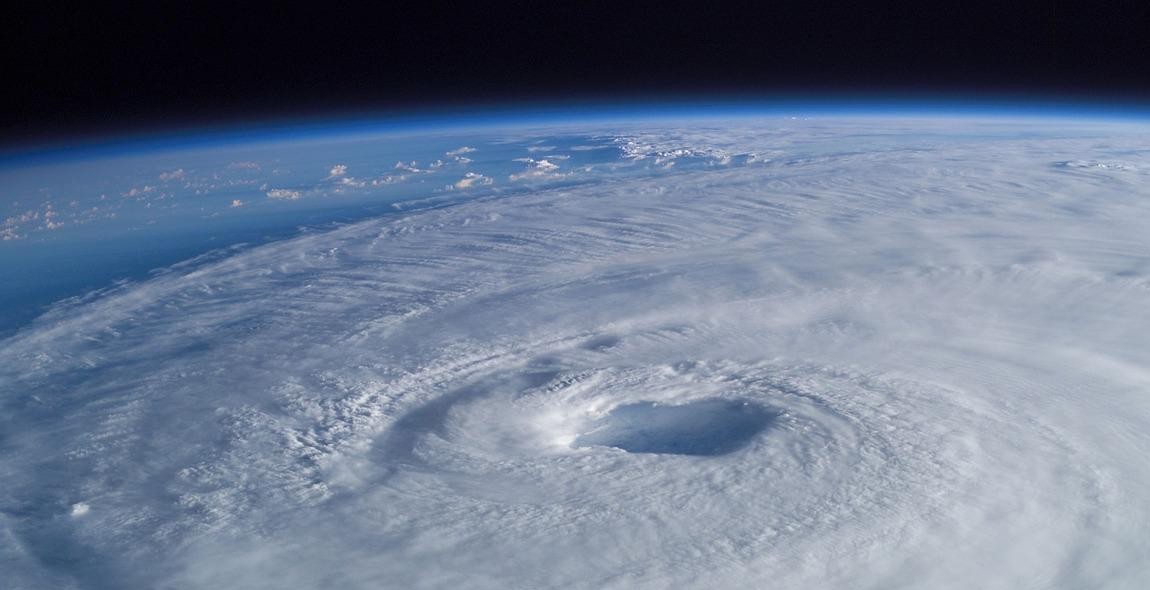How to Predict Weather: Using Barometers, Satellites, and Weather Models
Weather prediction has always been a fascinating topic for everyone. Knowing the weather conditions in advance can help us plan our activities accordingly. With the advancement of technology, predicting the weather has become more accurate and reliable. In this article, we will discuss various methods to predict weather using barometers, satellites, and weather models.
Using Barometers
Barometers are used to measure air pressure. The change in air pressure indicates the change in weather conditions. When the air pressure is high, it indicates clear and sunny weather. On the other hand, low air pressure indicates cloudy and rainy weather.
Using Satellites
Satellites are used to observe the weather patterns from space. They provide real-time information about the movement of clouds, storms, and other weather conditions. This information is used to make accurate weather predictions.
Using Weather Models
Weather models are computer programs that use complex algorithms to predict weather conditions. These models take into account various factors such as temperature, air pressure, wind speed, humidity, and more. They are used by meteorologists to make accurate weather predictions for a specific location and time.
In conclusion, predicting the weather has become more accurate and reliable with the use of advanced technology. By using barometers, satellites, and weather models, we can make informed decisions and plan our activities accordingly.

Barometers: Understanding Air Pressure
If you want to predict the weather like a pro, you need to understand the concept of air pressure. Air pressure is the weight of the atmosphere pressing down on the Earth’s surface. Changes in air pressure can indicate changes in the weather, and that’s where barometers come in.
What is a Barometer?
A barometer is a scientific instrument that measures air pressure. It consists of a glass tube filled with mercury or aneroid capsules that expand and contract based on changes in air pressure. Barometers are often used by meteorologists to predict weather patterns and changes.
There are two main types of barometers: mercury barometers and aneroid barometers. Mercury barometers use a glass tube filled with mercury to measure air pressure. As air pressure changes, the mercury level in the tube rises or falls. Aneroid barometers use a sealed metal box that expands and contracts based on changes in air pressure. The change in the shape of the box is then measured and translated into air pressure readings.
How Does a Barometer Work?
A barometer works by measuring the weight of the atmosphere pressing down on the Earth’s surface. When air pressure is high, it means that the atmosphere is heavy and pushing down on the Earth’s surface. When air pressure is low, it means that the atmosphere is lighter and not pushing down as hard.
Changes in air pressure can indicate changes in weather patterns. For example, when a low-pressure system is approaching, the air pressure will drop. This drop in air pressure can cause clouds to form and precipitation to occur. On the other hand, when a high-pressure system is approaching, the air pressure will rise, causing clear skies and dry weather.
Barometers are an essential tool for predicting weather patterns and changes. By understanding the concept of air pressure and how barometers work, you can become a pro at predicting the weather.

Satellites: Tracking Weather Patterns
Satellites are one of the most important tools used to predict and track weather patterns. These devices are equipped with various sensors and instruments that enable them to collect data on temperature, humidity, air pressure, wind speed, and other atmospheric conditions. This information is then transmitted back to meteorologists on the ground who use it to create weather forecasts and models.
How Do Satellites Track Weather?
Weather satellites are placed in orbit around the Earth and use a variety of imaging and sensing technologies to monitor atmospheric conditions. Some of the most common instruments used in weather satellites include:
- Visible and Infrared Sensors: These sensors capture images of the Earth’s surface and atmosphere in visible and infrared light. This allows meteorologists to see cloud formations, track storms, and monitor temperature changes.
- Microwave Sensors: These sensors can penetrate clouds and measure the temperature, humidity, and other atmospheric conditions beneath them. This is particularly useful for tracking storms and other weather patterns that are obscured by clouds.
- Radiometers: These instruments measure the amount of radiation emitted by the Earth’s surface and atmosphere. This data can be used to calculate temperature and humidity levels.
Once the data is collected by the satellite, it is transmitted back to Earth where it can be processed and analyzed by meteorologists. This data is used to create weather models and forecasts that can help predict future weather patterns.
Types of Weather Satellites
There are two main types of weather satellites: geostationary and polar orbiting.
- Geostationary Satellites: These satellites are placed in a fixed orbit above the Earth’s equator and rotate at the same speed as the Earth. This allows them to constantly monitor the same region of the Earth’s surface. Geostationary satellites are particularly useful for tracking large-scale weather patterns such as hurricanes and typhoons.
- Polar Orbiting Satellites: These satellites orbit the Earth from pole to pole and provide global coverage of atmospheric conditions. They are particularly useful for monitoring smaller-scale weather patterns such as thunderstorms and tornadoes.
Both types of weather satellites are essential for predicting and tracking weather patterns around the globe. By combining data from multiple satellites, meteorologists can create more accurate weather models and forecasts that help keep people safe and informed.

Weather Models: Using Technology to Forecast Weather
Weather models are computer simulations used to predict future weather conditions. They are created by scientists and meteorologists who use complex mathematical equations to analyze data from various sources, such as satellite images, weather balloons, and ground-based weather stations. These models are essential tools for forecasting weather patterns and are used by meteorologists to make accurate predictions.
What are Weather Models?
Weather models are mathematical representations of the atmosphere that predict future weather conditions. They use a combination of current and historical weather data, as well as mathematical equations, to simulate the behavior of the atmosphere. These models are constantly being updated and refined as new data becomes available, making them more accurate over time.
There are two main types of weather models:
- Numerical Weather Prediction (NWP) Models: These models use mathematical equations to simulate the behavior of the atmosphere. They are the most commonly used type of weather model and can predict weather patterns up to 10 days in advance.
- Statistical Weather Models: These models use historical weather data to make predictions about future weather patterns. They are less accurate than NWP models and are typically used for short-term forecasting.
How Do Weather Models Work?
Weather models work by analyzing data from various sources and using mathematical equations to simulate the behavior of the atmosphere. The data used by weather models includes:
- Satellite Images: These images provide a view of the Earth’s atmosphere from space and are used to track weather patterns and movements of storms.
- Weather Balloons: These balloons are equipped with instruments that measure temperature, humidity, and wind speed. They are launched into the atmosphere and provide data about atmospheric conditions at various altitudes.
- Ground-Based Weather Stations: These stations are located on the ground and measure temperature, humidity, wind speed, and other atmospheric conditions.
Once the data has been collected, it is fed into a computer program that uses mathematical equations to simulate the behavior of the atmosphere. These equations take into account factors such as air pressure, temperature, humidity, and wind speed to predict future weather patterns.
The output of the weather model is a forecast that includes information about temperature, precipitation, wind speed and direction, and other weather conditions. These forecasts are constantly being updated as new data becomes available, making them more accurate over time.
| Advantages of Weather Models | Disadvantages of Weather Models |
|---|---|
| Accurate predictions of future weather conditions | Models can be complex and difficult to understand |
| Helpful in predicting severe weather events such as hurricanes and tornadoes | Models can be expensive to run and require powerful computers |
| Can be used to plan activities such as outdoor events and farming | Models are not always 100% accurate and can sometimes produce incorrect forecasts |
Overall, weather models are an essential tool for predicting weather patterns and are used by meteorologists around the world. While they are not always 100% accurate, they provide valuable insights into future weather conditions and help us prepare for severe weather events.

Conclusion
In conclusion, predicting weather is not an easy task, but with the right tools and knowledge, it can be done. Barometers, satellites, and weather models are just a few of the many tools that can be used to predict weather accurately.
Barometers are a great tool for predicting short-term weather changes. Knowing how to read and interpret the changes in atmospheric pressure can help you predict upcoming weather events. Satellites are another valuable tool for weather prediction. They provide real-time data on weather patterns and can help predict long-term weather changes.
Weather models are computer simulations that use complex algorithms to predict future weather patterns. They take into account various factors such as temperature, humidity, wind speed, and pressure to generate accurate weather forecasts.
It’s important to remember that weather prediction is not an exact science, and unexpected weather events can occur. However, by using the right tools and staying informed, you can make more informed decisions and be better prepared for whatever weather comes your way.
- Use a barometer to monitor atmospheric pressure changes
- Stay informed about weather patterns using satellite data
- Utilize weather models to generate accurate weather forecasts
- Stay prepared for unexpected weather events
By following these tips and utilizing the tools available to you, you can become better equipped to predict and prepare for any weather conditions that come your way.
